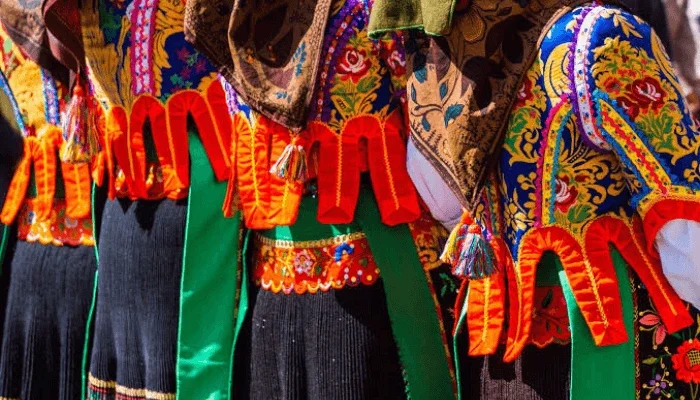
Traditional attire is more than just clothing, it is a powerful reflection of a culture's rich heritage, identity, and values. These attires carry the essence of a community's history, passed down through generations, each stitch and pattern telling a story. When you see someone adorned in their traditional attire, it is easy to trace their roots and connect them to their origin, as these clothes often embody the spirit and traditions of their homeland, and offer a glimpse into the unique cultural landscape of each region.
Gomesi - Uganda
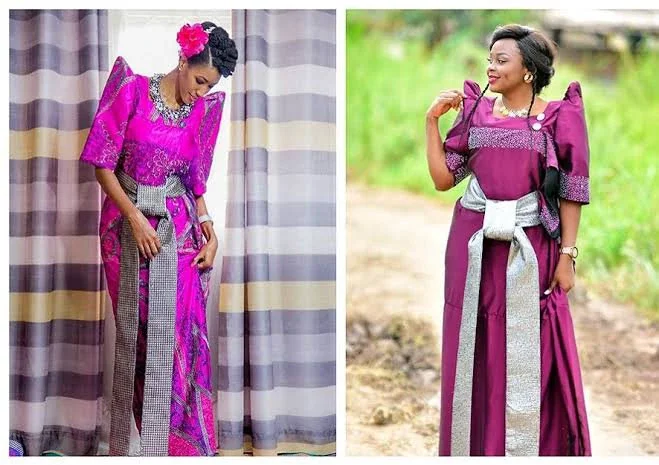
The Gomesi is a traditional dress worn by women in Uganda, especially among the Baganda people. It is a floor-length dress with short, puffed sleeves and a square neckline, usually made from silk, cotton, or linen. The Gomesi is often worn with a sash tied around the waist and is popular during weddings, introduction ceremonies, and other formal events.
The Barong Tagalog - Philippines
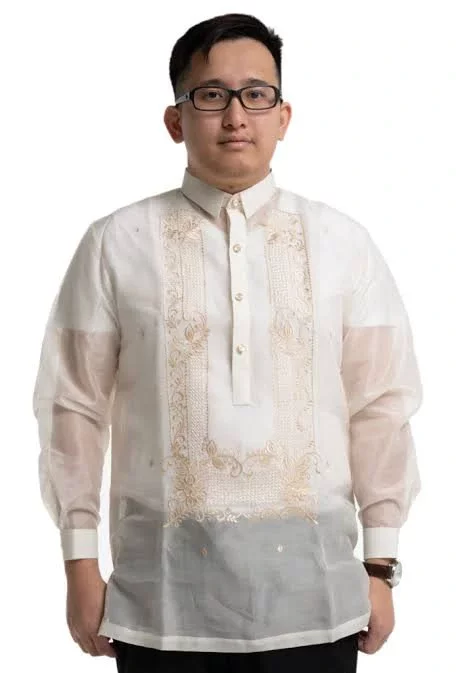
The barong Tagalog is the national dress of the Philippines, typically worn by men during formal occasions. Made from lightweight fabrics such as piña (pineapple fibre) or jusi (banana silk), the barong is a long-sleeved, embroidered shirt worn over an undershirt. It is often sheer and features intricate designs that reflect Filipino craftsmanship. The barong Tagalog is a symbol of Filipino identity and pride, blending indigenous materials and techniques with influences from the country's colonial history. It is often worn during weddings, national holidays, and other significant events.
The Bunad - Norway
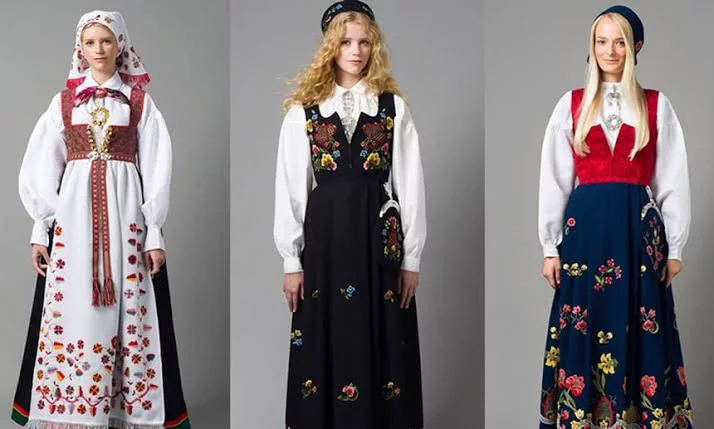
The bunad is a traditional Norwegian costume, deeply tied to the country's cultural heritage. Worn during national celebrations like Constitution Day on 17th May and at formal events such as weddings, the bunad's design varies by region, each featuring unique patterns, colours, and embroidery. Women's bunads typically include a woollen skirt, blouse, vest, and colourful accessories like purses and shoes, complemented by region-specific silver jewellery. Men's bunads usually consist of a colourful, embroidered three-piece suit. Traditionally, Norwegians had two bunader: one for special occasions and one for everyday wear.
The Qipao/Cheongsam - China
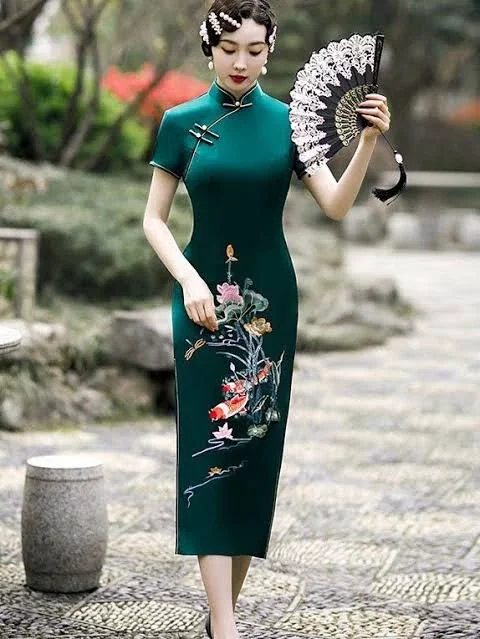
The qipao or cheongsam is a form-fitting dress from China, known for its high collar, side slits, and delicate embroidery. Originally, the qipao was a loose-fitting garment worn by Manchu women during the Qing Dynasty, but it evolved into its modern form during the 1920s in Shanghai, becoming a symbol of elegance and sophistication. The dress is often made from silk or satin, with intricate patterns that reflect Chinese art and culture. The qipao is typically worn during formal occasions and is a symbol of Chinese femininity and grace.
The Dirndl - Germany
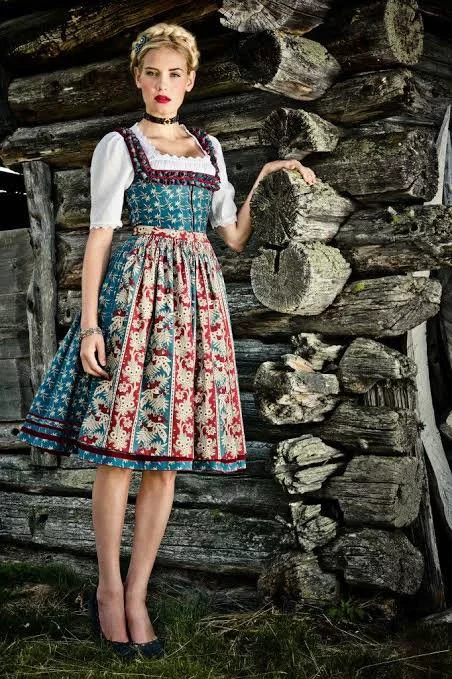
The dirndl is a traditional dress worn in Germany and Austria, particularly in the Alpine regions. It consists of a fitted bodice, a blouse, a full skirt, and an apron. The dirndl is often associated with Oktoberfest, but it is also worn during other festivals and celebrations. The design and colours of the dirndl can vary, with more elaborate versions worn for special occasions and simpler ones for everyday wear. The way the apron is tied is particularly significant; for example, a knot on the left side traditionally indicates that the wearer is single, while a knot on the right signifies that she is married.
The Kimono - Japan
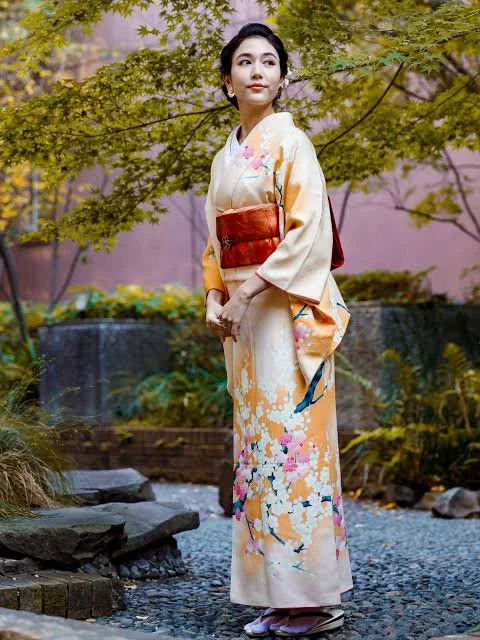
The kimono is a traditional Japanese garment known for its elegant, wrap-around design and long sleeves. Made from silk and adorned with intricate patterns, the kimono reflects the seasons, personal stories, and the wearer's age or marital status. Originally an undergarment during the Heian period (794-1185), the kimono became prominent outerwear in the Edo period (1603-1868). Worn by both men and women, it is secured with a wide belt called an obi. More than just clothing, the kimono is a cultural symbol and a work of art, embodying Japan's rich heritage.
The Sari - India
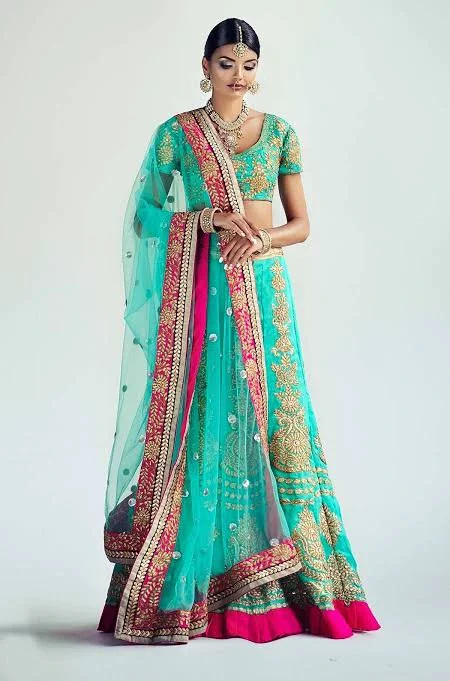
This long piece of cloth, typically six to nine yards in length, is draped elegantly around the body and paired with a fitted blouse and petticoat. The sari's vibrant colours and intricate embroidery reflect the rich craftsmanship of various Indian regions, with each area offering its unique style.
Hanbok - Korea
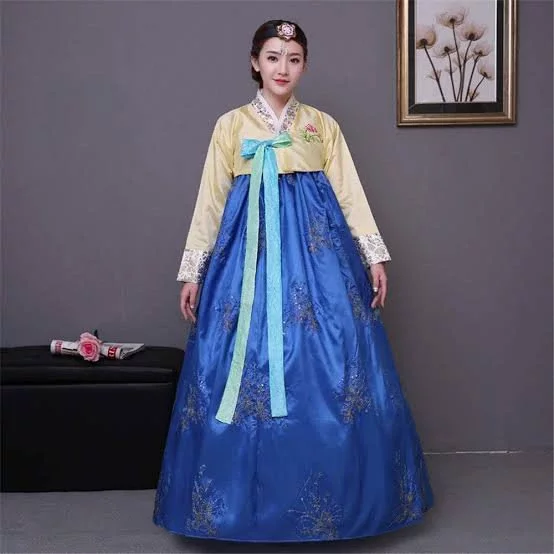
Korea's traditional dress, known as the hanbok, is distinguished by its bright colours and sleek, pocket-free design. The women's hanbok consists of a jeogori (jacket) paired with a chima (skirt), while the men's version includes baji (trousers). The hanbok is characterised by its wide sleeves and flowing lines, which make movement easy and elegant. Though it first appeared during the Goguryeo Kingdom, the hanbok has seen numerous changes over the centuries, all while preserving its essential features.
Baju Melayu - Malaysia
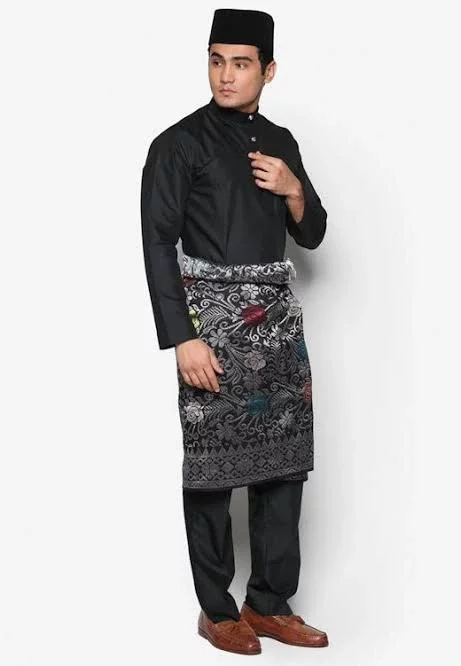
The Baju Melayu is a traditional Malay outfit for men, consisting of a long-sleeved shirt, trousers, and a kain samping (a sarong-like cloth worn around the waist). This outfit is commonly worn during religious and cultural, and is an important symbol of Malay identity. The Baju Melayu is usually made from silk or cotton and comes in various colours, often complemented by a songkok (a type of cap).
Kilt - Scotland
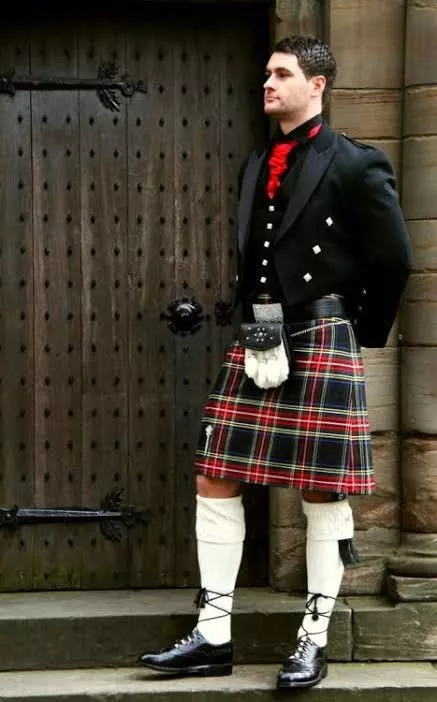
The Kilt is a knee-length garment with pleats at the back, traditionally made of wool tartan cloth. This piece of Scottish attire is deeply rooted in the country's history and culture. The tartan patterns, known as "clan tartans," are associated with specific Scottish clans, and wearing a kilt in a particular tartan signifies one's allegiance to that clan. Kilts are worn by men during formal events, such as weddings and Highland games, and are often paired with accessories like sporrans (a type of pouch), sgian-dubhs (small knives), and kilt pins.

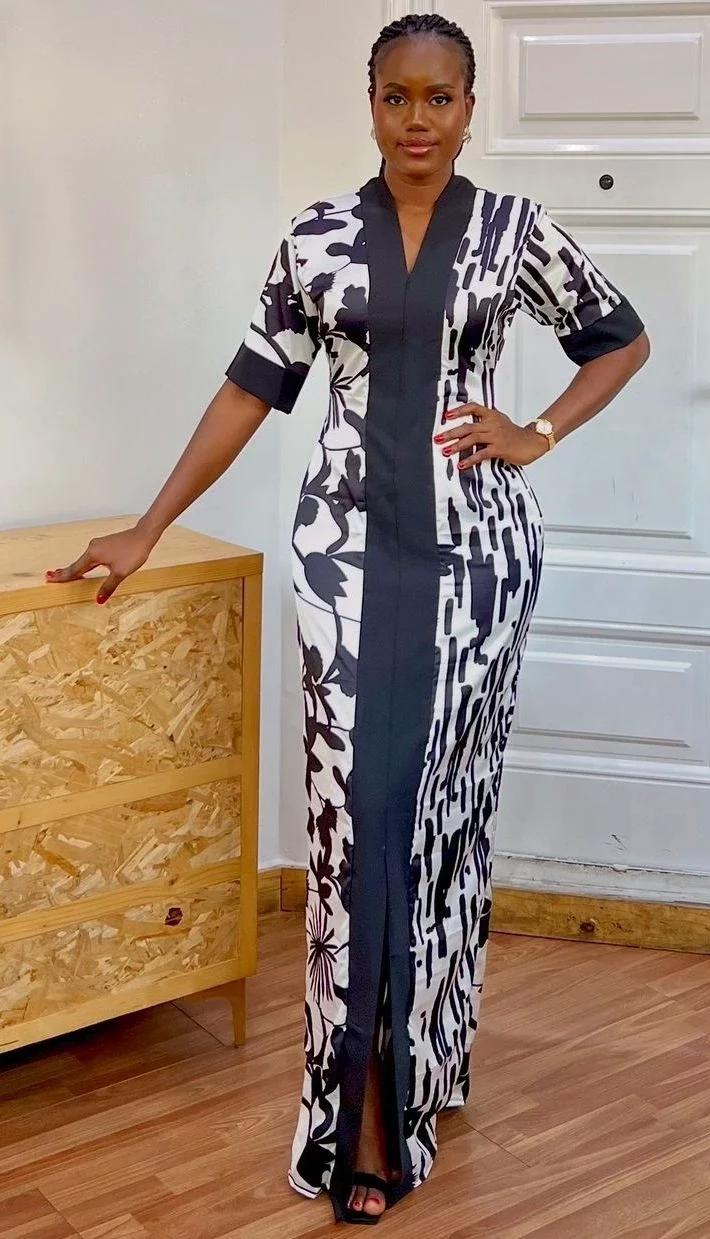
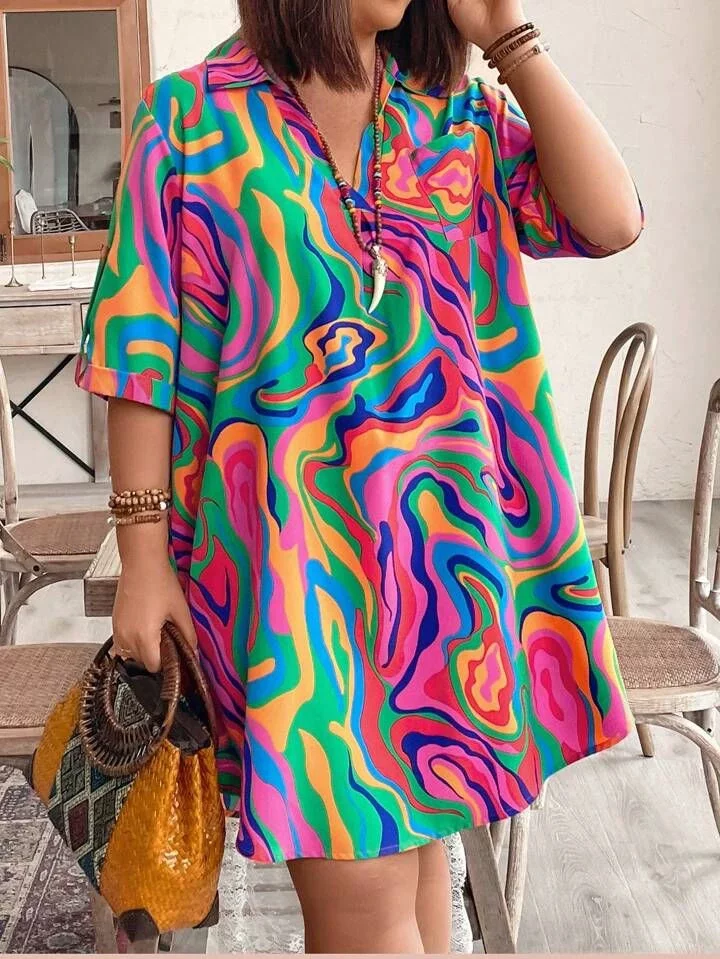
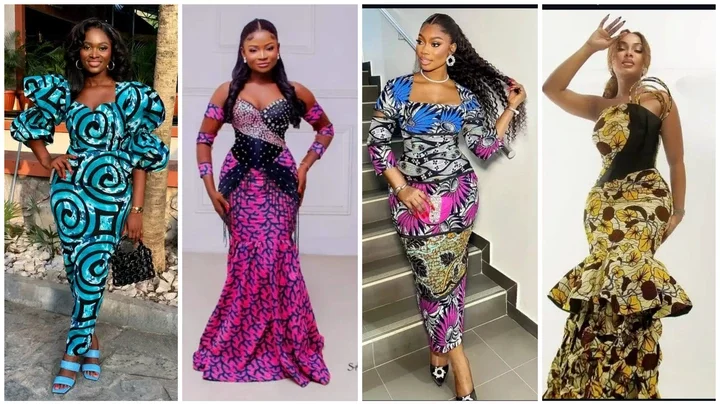
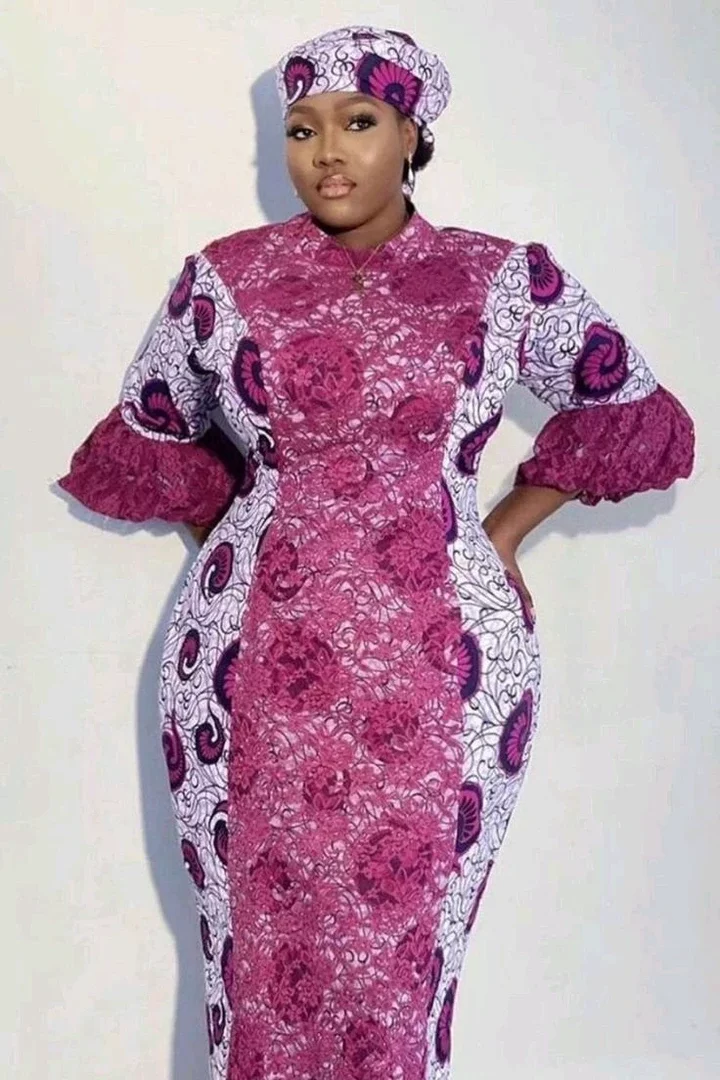
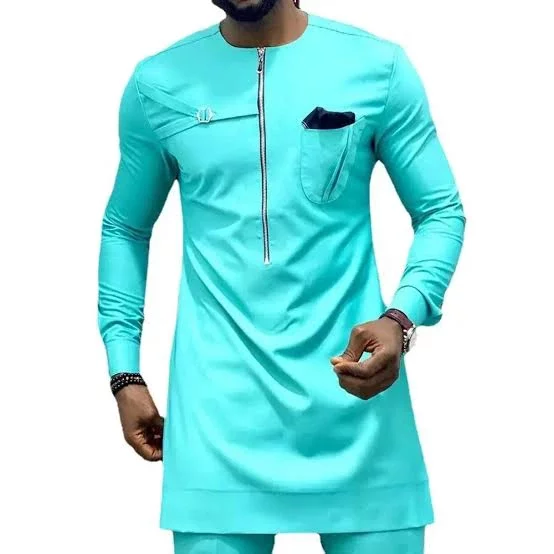











Comments